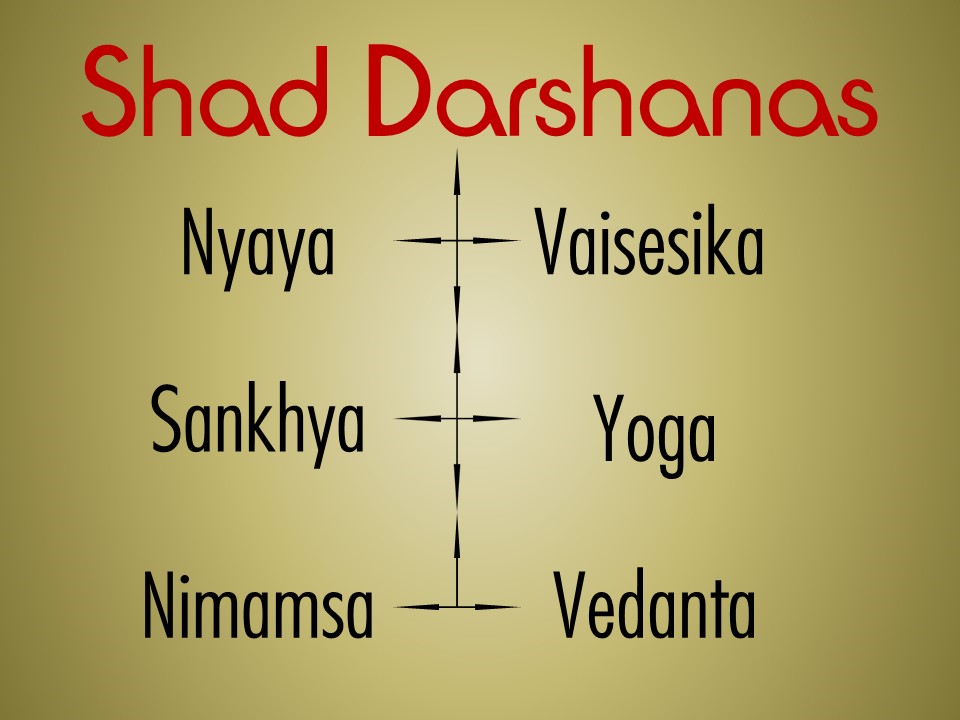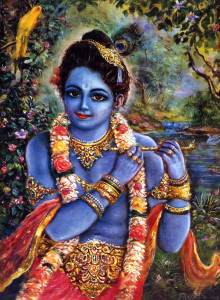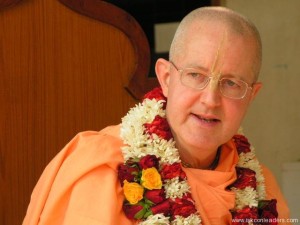
One Sanatana Dharma but different paths?
Do we ever wonder why there is so much confusion about God? India, the ancient and pious land known as Bharat Varsha, is supposed to be the spiritual center of the whole world, distributing spiritual knowledge to all the seekers. However, we find that great Indian philosophers and sages from India, each of them present a very different path and understanding of the Absolute Truth. No doubt genuine seekers get confused about where to go as all different philosophies seem logical and authenticate, being proven by various quotations from the Vedas. As a result, the general population got confused. Without the shelter of a bonafide spiritual master common man started considering demigods as equal to Supreme Lord, many became indifferent to our own culture, the rules and regulations thinking them to be outdated or dogmatic, gradually falling down into atheism. Is it a case of Chiraag tale andhera (darkness under the lamp)?
We will try to unlock this great mystery in two steps ( two blogs)-
- Understand six philosophies based on Vedas, called Sada Darsana
- Learn how theese six philosophies are not separate rather they are like different rungs of a ladder, gradually leading the practitioner to the top of the ladder- Supreme Absolute Truth.
In today’s blog, we will learn about six Vedic philosophies or Sada darsana. We will also see how more or less all the so-called great western philosophers fall in any one of them.
Seeing it from the eyes of Guru, Sadhu and Shastra
There are many theoretical philosophers in the world who put forward their own theories of cause and effect especially about the cause of suffering and its effect on different living beings. Generally there are six great philosophers: Kaṇāda, the author of Vaiśeṣika philosophy; Gautama, the author of logic; Patañjali, the author of mystic yoga; Kapila, the author of Sāṅkhya philosophy; Jaimini, the author of Karma-mīmāṁsā; and Vyāsadeva, the author of Vedānta-darśana.
Six schools of Vedic philosophy
(1) The Mīmāṁsaka philosophers, following the principles of Jaimini, stress fruitive activity and say that if there is a God, He must be under the laws of fruitive activity. In other words, if one performs his duties very nicely in the material world, God is obliged to give one the desired result. According to these philosophers, there is no need to become a devotee of God. If one strictly follows moral principles, one will be recognized by the Lord, who will give the desired reward. Such philosophers do not accept the Vedic principle of bhakti-yoga. Instead, they give stress to following one’s prescribed duty.
(2) Atheistic Sāṅkhya philosophers like Kapila analyze the material elements very scrutinizingly and thereby come to the conclusion that material nature is the cause of everything. They do not accept the Supreme Personality of Godhead as the cause of all causes.
(3) Nyāya philosophers like Gautama and Kaṇāda have accepted a combination of atoms as the original cause of the creation.
(4) Māyāvādī philosophers say that everything is an illusion. Headed by philosophers like Aṣṭāvakra, they stress the impersonal Brahman effulgence as the cause of everything.
(5) Philosophers following the precepts of Patañjali practice rāja-yoga. They imagine a form of the Absolute Truth within many forms. That is their process of self-realization.
All five of these philosophies completely reject the predominance of the Supreme Personality of Godhead and strive to establish their own philosophical theories.
However, Śrīla Vyāsadeva wrote the Vedānta-sūtra and, taking the essence of all Vedic literature, established the supremacy of the Supreme Personality of Godhead.
All five kinds of philosophers mentioned above understand that impersonal Brahman is without material qualities, and they believe that when the Personality of Godhead appears, He is contaminated and covered by the material qualities. The technical term used is saguṇa. They speak of saguṇa Brahman and nirguṇa Brahman. For them, nirguṇa Brahman means “the impersonal Absolute Truth without any material qualities” and saguṇa Brahman means “the Absolute Truth that accepts the contamination of material qualities.” More or less, this kind of philosophical speculation is called Māyāvāda philosophy.
The fact is, however, that the Absolute Truth never has anything to do with material qualities because He is transcendental. He is always complete with full spiritual qualities. The five philosophers mentioned above do not accept Lord Viṣṇu as the Supreme Personality of Godhead, but they are very busy refuting the philosophies of other schools.
Why only Vyasadeva?
There are six kinds of philosophical processes in India. Because Vyāsadeva is the Vedic authority, he is known as Vedavyāsa. His philosophical explanation of the Vedānta-sūtra is accepted by the devotees. As Kṛṣṇa confirms in the Bhagavad-gītā (15.15):
sarvasya cāhaṁ hṛdi sanniviṣṭo
mattaḥ smṛtir jñānam apohanaṁ ca
vedaiś ca sarvair aham eva vedyo
vedānta-kṛd veda-vid eva cāham
“I am seated in everyone’s heart, and from Me come remembrance, knowledge and forgetfulness. By all the Vedas, I am to be known; indeed, I am the compiler of Vedānta, and I am the knower of the Vedas.”
The ultimate goal of studying all Vedic literature is the acceptance of Kṛṣṇa as the Supreme Personality of Godhead. The Kṛṣṇa consciousness movement is propagating the philosophical conclusion of Śrīla Vyāsadeva and following other great ācāryas like Rāmānujācārya, Madhvācārya, Viṣṇu Svāmī, Nimbārka and Śrī Caitanya Mahāprabhu Himself.
It may be argued that Śukadeva Gosvāmī is not the only authority of perfect knowledge in transcendence because there are many other sages and their followers. Contemporary to Vyāsadeva or even prior to him there were many other great sages, such as Gautama, Kaṇāda, Jaimini, Kapila and Aṣṭāvakra, and all of them have presented a philosophical path by themselves. Patañjali is also one of them, and all these six great ṛṣis have their own way of thinking, exactly like the modern philosophers and mental speculators. The difference between the six philosophical paths put forward by the renowned sages above mentioned and that of Śukadeva Gosvāmī, as presented in the Śrīmad-Bhāgavatam, is that all the six sages mentioned above speak the facts according to their own thinking but Śukadeva Gosvāmī presents the knowledge which comes down directly from Brahmājī, who is known as ātma-bhūḥ, or born of and educated by the Almighty Personality of Godhead.
Vedanta is the ultimate conclusion
You know there are six kinds of philosophies in India; the mīmāṁsaka philosophy; and Sāṅkhya philosophy; and nyāya—nyāya means logic—nyāya philosophy; then Māyāvāda philosophy; then Patañjali, yoga system, Patanjali philosophy; and at last, this Vedānta philosophy. So there are six kinds of philosophers. Out of them, only the Vedānta philosophy is compiled by Vyāsadeva. So it is considered that Vedānta philosophy only establishes the existence of God; all other philosophies, they do not admit the existence of God. They are atheistic philosophies.
( SPL, 24/1/1967, San Francisco)
The philosophy of Brahma-mīmāṁsā, or Vedānta, the ultimate conclusion of the Absolute Truth (janmādy asya yataḥ), propounded by Vedavyāsa. Actually Vedānta philosophy is meant for the devotees because in the Bhagavad-gītā (15.15) Lord Kṛṣṇa says, vedānta-kṛd veda-vid eva cāham: “I am the compiler of Vedānta, and I am the knower of the Vedas.” Vyāsadeva is an incarnation of Kṛṣṇa, and consequently Kṛṣṇa is the compiler of Vedānta philosophy. Therefore Kṛṣṇa clearly knows the purport of Vedānta philosophy. As stated in the Bhagavad-gītā, whoever hears Vedānta philosophy from Kṛṣṇa is actually aware of the real meaning of Vedānta. The Māyāvādīs call themselves Vedāntists but do not at all understand the purport of Vedānta philosophy. Not being properly educated, people in general think that Vedānta means the Śaṅkarite interpretation.
For eons, all over the world, research on the subject of kṣetra and kṣetrajña has been going on. In India the six philosophical schools have extensively discussed this topic, but this discussion has merely been an exercise in logic and sophistry that has led to many differing opinions among the sages. Hence none of these schools has truly practiced jñāna -yoga, the path of perfect knowledge. Only when discussion of kṣetra and kṣetrajña is applied in the Lord’s service does the exercise become jñāna -yoga
(Renunciation through wisdom, 3.2)
Bhaktivedanta Swami Srila Prabhupada – Empowered Acharya in parampara
So the Vaiṣṇava-sampradāya, they are also Vedāntist. And because Vaiṣṇava-sampradāya, they are concerned with the bhakti, bhakti, I mean to say, cult, therefore our society, the Vaiṣṇavas, they were pleased to give me this title, Bhaktivedanta that, “You will explain the Vedānta-sūtra.” So this Bhaktivedanta title was especially offered to me, and I do not know why. That’s all. So that Vedānta means bhakti, devotional service.
( SPL, 24/1/1967, San Francisco)
Devotees should know these six philosophies
Theism is explained completely in the Vedānta-sūtra, whereas in other systems of philosophical speculations, practically no mention is given to the ultimate cause of all causes. One can sit on the vyāsāsana only after being conversant in all systems of philosophy so that one can present fully the theistic views of the Bhāgavatam in defiance of all other systems.
I pray and hope that the above quotes from scriptures helped us to get a general understanding of six philosophies, or Shad darshan as they are called in Sanskrit. Krishna willing, in the next blog, we will hear how each of these six philosophies is interconnected, one leading to the next, gradually meant to elevate our consciousness up to the Supreme Absolute Truth- the lotus feet of Sri Krishna.
All glories to Srila Prabhupada.
your servant,
Giriraj dasa


